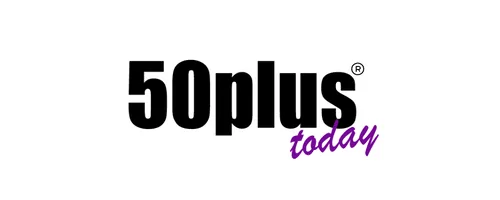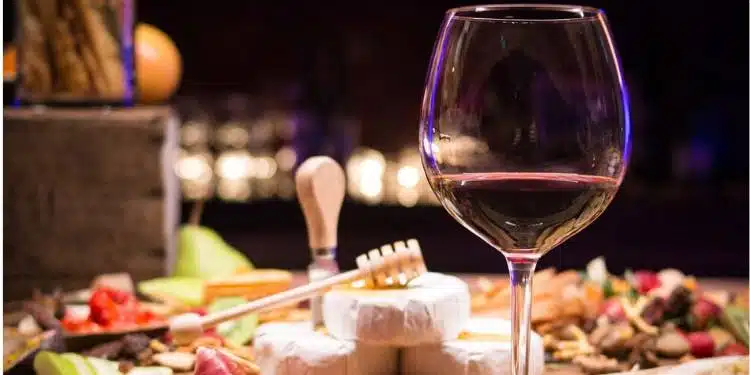by Greg Indelicato
As National Wine and Cheese Day approaches every year on July 25th, my thoughts drift to my introduction to wine nearly five decades ago. At that time my generation’s favorite wines were nothing like those we enjoy today. Rather, they were more like the old cheap “street wines” such as Mad Dog 2020 and Thunderbird, or the sweet hippie wines of the late ’60s and 70’s such as Annie Green Springs, Strawberry Hill, and Boone’s Farm. And yes, they were fruity and sweet.
Pairing Wine and Cheese
I wasn’t familiar with wine and cheese pairing in the early days of my budding adventure. The closest I came to a pairing was an American cheese sandwich with my sweet wine. But things progressed. I eventually learned about new cheeses such as Jarlsberg, Edam, and Gouda. And it was a natural next step to enjoy my new cheeses with “upgraded” wines, though I still probably drank from a leather wine bladder complete with fringes.
It Started with the Fondue Craze
Armed with this new knowledge, I set out to impress my current girlfriend. Fondue was all the rage back in the early 70’s, so I invited her to join me and some friends at a local event. At that time, I thought those who participated in this type of culinary feast possessed an air of sophistication, me included. That is until it was time for me to select a wine from the menu. All I knew beyond my sweet wine experiences was red or white. I felt like all eyes were on me, especially the waiters. Suddenly, I became the de facto wine expert for the table. Then, as I was reading the menu, I saw it; my way out of this. I recognized a name: Blue Nun! How could I go wrong, Blue Nun goes with everything, doesn’t it?
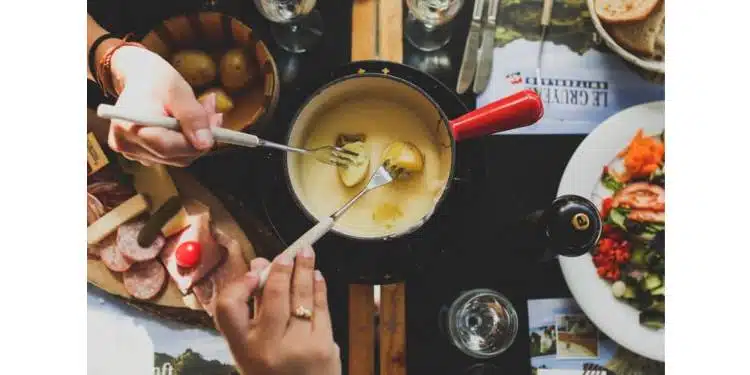
Treading Lightly in the Wine Field
To avoid further embarrassment, I shifted my choice of alcohol to spirits for the next thirty-five years. But then came the wine and cheese parties. I thought I was comfortably out of the wine maze, only to abruptly be thrown back in. Only now there was an additional component: Cheese. I was right back where I started – at the mercy of waiters, bartenders, other people, and worst of all, the dreaded Sommelier, or wine steward.
Again, I set out to learn about wine, and then how to pair it with cheese. Yes, I purchased those Dummy and Idiot books and a basic wine course on CD. I also had a simple wine and cheese pairing guide. These resources helped tremendously but still didn’t answer my specific questions about “why” to pair a particular wine with a certain cheese – or any other food, for that matter.
Looking at Wine and Cheese Pairing from a Different Perspective
I then enrolled in a few intermediate wine certification courses, but to my surprise, the discussions did not specify how to pair wine X with cheese Y. Instead, they focused on the interactions of individual flavor elements that create a synergistic experience. Now we were getting somewhere. The instructors did not simply give me a fish, instead they taught me to fish.
In my classes, I was fortunate to meet others with education and experience in the culinary arts. Our conversations provided a view into a different world. They paired wine with cheese and other foods effortlessly. I learned wine is a set of flavors itself, so why not look at the flavor elements in the wine and pair them with the appropriate flavor elements in cheese? It all made sense.
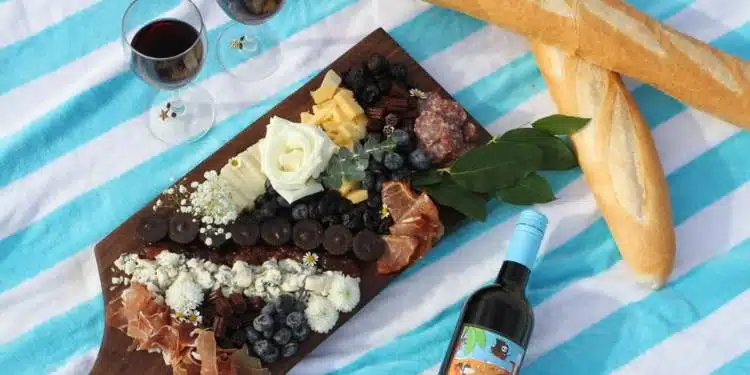
The Flavor Elements
First, let me go back to my experiences where books, articles, and people said: “Pair X with Y”. That was great, as long as X and Y were available. But my mission was to understand the “why”. For that, we turned to our taste buds and the five (5) taste modalities.
The five taste modalities:
*Salty
*Sweet
*Sour (acidity)
*Bitter (astringency)
*Umami (savory)
We use these elements, along with others such as “chili heat” and alcohol “burn”, to align the flavor profiles of the food (in this case: cheese) with an appropriate wine.
The Science Behind the Pairings
At this point in my wine adventure, my science background kicked in. Basically, I became a mad wine scientist. I tried many different combinations and logged my perceptions. Then I retested my “hypotheses” on friends and family and made notes that focused on the flavor elements and the reactions when paired with different foods.
3 Important Wine and Cheese Pairing Lessons
My journey continues, but here’s what I learned through my years of research about the importance of flavor elements when I pair wine with cheese.
- Let’s start with salty. Salt is a wine-friendly element. The salt in cheese softens the hardening elements, such as astringency, in the wine. It works well with highly acidic wines too. And salt gives the perception of the body to a somewhat weaker wine.
- Next, is sweetness. My personal experimentation became useful here as the pairing suggestion is somewhat counterintuitive. It is best to pair wines that contain a hint of sweetness vs a very dry wine. The astringency (bitterness) element in a dry wine is exacerbated by the flavors in a strong cheese, which negatively impacts the flavors of both. A Riesling pairs very well with most cheeses. The more powerful the cheese flavor profile, the better it can handle a sweeter wine. Such a classic pairing is Tawny Port with any of the strongly flavored, blue-veined cheeses.
- Acidity in wine is very powerful with foods with high-fat content, as is the case with most cheese. The acidity, or crispness, cuts through the greasy coating in your mouth. The mix of the fats and proteins with the crisp wine is synergistic. In other words, they each heighten the other element. We find a similar effect when we pair a bold, tannic red with a strong cheese.
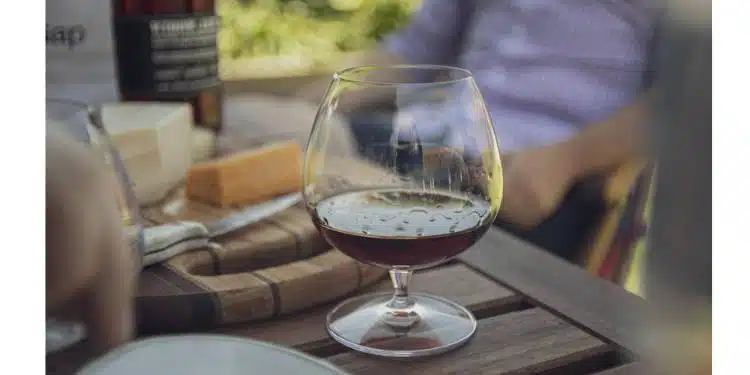
Common Wine and Cheese Pairings
I understand some people become intimidated when trying to match the right wine and cheese. However, learning this skill is important because if done well, a good combination is an exquisite experience. Try to consider all the factors when you pair wine and cheese. While a wine or cheese by itself may be spectacular, it may not be a good idea to combine the two.
To help you get started, below are a few of the more common wine and cheese pairings:
Chardonnay and Mild Cheddar Cheese
Chardonnay is a dry, medium-bodied white wine with apple and pear notes. Its fruity and crisp flavor enhances the characteristics of mild cheddar, particularly the sweetness and creaminess.
Riesling and Blue Cheese
Sweet Riesling, a light-bodied, white wine, has fruit and peach blossom flavors. The acidity and sweetness of this wine works well with the strong characteristics of salty cheeses like blue cheese. Note: Dry Riesling pairs better with soft creamy cheeses like brie or camembert.
Pinot Grigio and Mild Cheese
Pino Grigio is a light-bodied dry white wine that often has hints of citrus. This versatile wine is considered very food-friendly and pairs well with many cheeses, particularly mild cheeses like mozzarella and chevre.
Cabernet Sauvignon and Extra Sharp Cheddar Cheese
A full-bodied and dry red Cabernet Sauvignon contains hints of dark fruits and herbs that draw out the bold cheddar flavors of extra sharp cheddar cheese. Cabernet Sauvignon works well with other intense cheeses too, particularly those that are firm and salty.
Merlot and Garlic and Herb Cheese
Merlot, a fruity medium to dry full-bodied red wine, pairs well with garlic and herb cheese. The sharp and tangy flavors in the cheese. brings out notes of black cherry, plum, and black tea.
Wine and Cheese Pairings Look Different for Different People
I recommend you experiment and develop your own style. As with my journey, try different combinations and don’t get stuck on all the rules. After all, it comes down to what you and your wine friends enjoy. Don’t follow a specific wine and cheese pairing guide without some deviation to account for personal taste. If a nontraditional combination works for you, go with it!
About the Author: Greg Indelicato
 Greg Indelicato holds several certifications in the wine and spirits discipline, notably WSET 1 and 2: World Masterclass of Whiskey and Certified Bourbon Steward. Over the past several years, Greg served as a guest speaker on wines and spirits for Speaking of Grapes and Grains, as well as for various industry and private clients. He enjoys helping others better understand wine and spirits and looks for opportunities to share his knowledge and passion with others. A recently retired geologist, Greg’s extensive science background provides a unique perspective for both the novice and the more seasoned wine and spirits drinkers.
Greg Indelicato holds several certifications in the wine and spirits discipline, notably WSET 1 and 2: World Masterclass of Whiskey and Certified Bourbon Steward. Over the past several years, Greg served as a guest speaker on wines and spirits for Speaking of Grapes and Grains, as well as for various industry and private clients. He enjoys helping others better understand wine and spirits and looks for opportunities to share his knowledge and passion with others. A recently retired geologist, Greg’s extensive science background provides a unique perspective for both the novice and the more seasoned wine and spirits drinkers.
Contact Greg with your wine questions or for additional information about tastings.
